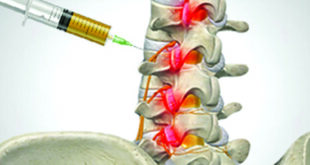The Path to Balanced Hormones, Healthy Eating, and Active Living
 Introduction
Introduction
In our modern world, the dual epidemics of insulin resistance and obesity are wreaking havoc on public health. These conditions are not just about carrying extra weight or dealing with fluctuating blood sugar levels – they are precursors to more severe health problems, including type 2 diabetes, cardiovascular disease, and metabolic syndrome. While the causes are complex, the solutions are within reach. By understanding the intricate links between insulin resistance, obesity, and overall metabolic health, we can implement strategies to reclaim our health. This article explores the problem of insulin resistance and obesity, offering a path forward through hormone balancing, dietary adjustments, and regular physical activity.
Understanding Insulin Resistance
Insulin resistance (IR) lies at the heart of most metabolic disorders. This condition occurs when the body’s cells become less responsive to insulin, a crucial hormone that regulates blood sugar levels while also limiting fat breakdown. As a result, the pancreas produces more insulin to compensate, leading to hyperinsulinemia (elevated insulin levels). Over time, this disrupts various metabolic pathways, leading to elevated blood sugar, increased triglycerides, and ultimately, the development of type 2 diabetes and other metabolic disorders.
The Connection Between Obesity and Insulin Resistance
Obesity is closely linked to insulin resistance. Excess fat, particularly visceral fat, contributes to inflammation and disrupts normal insulin signaling, exacerbating insulin resistance. The literature underscores how insulin resistance manifests early in the progression of obesity-related diseases like type 2 diabetes and metabolic syndrome. One of the first metabolic changes observed with insulin resistance is an increase in the triglyceride/HDL ratio, a marker often overlooked in favor of LDL cholesterol levels. This highlights the need for early intervention, well before traditional markers like HbA1c indicate diabetes. Additionally, a HOMA score relating your insulin and glucose levels can point to insulin resistance years before you HgA1c changes.
Thyroid Hormone Sensitivity and Metabolic Syndrome:
A New Frontier
A fascinating development in our understanding of metabolic syndrome is the role of thyroid hormone sensitivity. Recent research highlights a significant association between reduced sensitivity to thyroid hormones and the risk of developing metabolic syndrome (MetS). The study found that individuals with higher levels of thyroid hormone resistance markers, like the Thyroid Feedback Quantile-based Index (TFQI) and the Thyrotroph T4 Resistance Index (TT4RI), were more likely to suffer from MetS and its components, including abdominal obesity, hypertriglyceridemia, and hypertension.
This raises an important point: while insulin resistance is widely recognized as a critical factor in metabolic disorders, the idea that resistance to other hormones, such as thyroid hormones, could similarly impact health is less commonly accepted. This study underscores the need to broaden our understanding of hormone resistance beyond insulin. Just as insulin resistance plays a pivotal role in metabolic syndrome, so too might thyroid hormone resistance, influencing fat distribution, muscle mass, and overall metabolic health.
Hormonal Balance:
The Key to Addressing Insulin Resistance and Beyond
Hormones play a vital role in regulating our metabolism, and any imbalance can lead to insulin resistance, obesity, and potentially even thyroid hormone resistance. For example, the hormone estrogen (estradiol) has been shown to enhance mitochondrial function and reduce inflammation, particularly in fat tissue. This is significant because inflammation in fat tissue is a key driver of obesity-related insulin resistance. Regular exercise has a similar anti-inflammatory effect, improving fat tissue health and reducing the risk of insulin resistance.
Furthermore, the role of testosterone in metabolic health cannot be ignored. Recent research suggests that testosterone therapy might offer significant benefits for men with type 2 diabetes and obesity, including improved insulin sensitivity, better lipid profiles, and enhanced sexual health. This evidence challenges the cautious approach of mainstream guidelines, suggesting that hormone therapy, when carefully managed, can be a powerful tool in combating insulin resistance and obesity.
Dietary Changes:
Adapting to Metabolic Realities
As insulin resistance progresses, our bodies lose the ability to process sugars effectively. This is where dietary changes become crucial. It’s not just about cutting calories; it’s about making informed choices that support metabolic health. Reducing the intake of high-glycemic carbohydrates and sugars is essential, as these can exacerbate insulin resistance and contribute to the accumulation of visceral fat.
The growing prevalence of Metabolic Dysfunction-Associated Fatty Liver Disease (MAFLD) further underscores the need for dietary interventions. MAFLD is closely linked to insulin resistance, and research shows that the inflammation in fat tissue caused by obesity can worsen insulin resistance. This creates a vicious cycle that is hard to break without targeted dietary changes. Foods that were once considered “healthy,” like low-fat dressings or fruit yogurts, often contain hidden sugars that can worsen insulin resistance. Instead, focusing on whole, unprocessed foods that are low in sugar and rich in healthy fats can help manage insulin levels and reduce the risk of developing MAFLD.
The Role of Physical Activity:
Moving Towards Health
Exercise is a powerful tool in the fight against insulin resistance and obesity. Walking alone improves insulin sensitivity, reduces inflammation, and helps manage weight. The literature reveals that combining weight loss with high levels of physical activity significantly reduces the risk of adverse cardiovascular events in individuals with type 2 diabetes and obesity. This underscores the importance of a holistic approach that integrates both diet and exercise.
Physical activity also has direct effects on fat tissue health. Studies show that exercise reduces inflammation in white adipose tissue (WAT) and can even “activate” brown adipose tissue (BAT), which helps burn calories and regulate body temperature. By improving the health of fat tissue, exercise directly combats one of the root causes of insulin resistance.
Conclusion:
A Holistic Approach
to Combating Insulin Resistance and Obesity
The fight against insulin resistance and obesity requires a multifaceted approach. Balancing hormones, particularly through therapies that address estrogen, testosterone, and even thyroid hormone sensitivity, offers a promising avenue for improving metabolic health. At the same time, adapting our diets to reduce sugar intake and increase nutrient-dense, whole foods can help our bodies manage insulin more effectively. Finally, incorporating regular physical activity not only aids in weight management but also improves fat tissue health and reduces systemic inflammation.
By addressing these three key areas—hormonal balance, dietary changes, and physical activity—we can make significant strides in combating insulin resistance and obesity. This approach not only helps prevent the progression to more serious conditions like type 2 diabetes and cardiovascular disease but also promotes overall health and well-being. As we move forward, it’s essential to stay informed about the latest research and to tailor our strategies to meet the unique needs of each individual. In doing so, we can turn the tide on these pervasive health challenges and pave the way for a healthier future.
863-899-2404
info@optimizedwellness.net
optimizedwellness.net
 Central Florida Health and Wellness Magazine Health and Wellness Articles of the Villages
Central Florida Health and Wellness Magazine Health and Wellness Articles of the Villages



